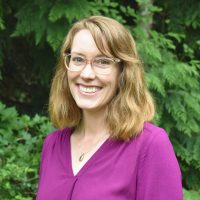Fish, Fire, Food, and Floodplains: Healing Place and People
November 2024 Update
Overview:
This project, inspired by the Klamath Tribal members of the Ambodat Department, focuses on addressing the interconnected challenges in the Upper Klamath Basin in south-central Oregon. Key issues include water shortages, toxic algae, endangered sucker fish, vulnerable salmon, and habitat degradation, all of which threaten the resilience of the ecosystem and the communities dependent on it. These problems are exacerbated by historical land use practices such as fire suppression and water diversion. Climate-adapted restoration of ecosystems is essential for promoting social justice and environmental health in the region.
Goals:
- Inventory Landscape-Level Incised Channels: Generate a comprehensive inventory of incised channels that disconnect streams from floodplains on the Klamath Reservation (~1.2 million acres).
- Reconnect Streams and Floodplains: Improve water quality and quantity by trapping sediment, increasing water storage, and slowing flow rates.
- Promote Ecosystem Resilience: Foster resilience of the ecosystem and communities to climate warming through restoration efforts.
Approach:
The project will utilize recently acquired Lidar data to detect topographic depressions and the Wetland Intrinsic Potential (WIP) tool to map hydrologic networks. This combined approach will allow for the identification of potential restoration sites and the quantification of the disconnect between streams and floodplains.
Research Focus:
- Identify Incised Channels: Use Lidar data to detect and map incised channels.
- Map Wetland Potential: Employ the WIP tool to assign wetland probability values and generate maps of probable streams, meadows, wetlands, and floodplains.
- Correlate Channels with Water Flow: Analyze the relationship between incised channels and water flow using remote sensing and geophysical data.
Why It Matters:
Climate warming and historical land use practices have compounded water scarcity and habitat degradation in the Upper Klamath Basin. By reconnecting streams with floodplains and restoring ecosystem functions, this project aims to provide multiple benefits, including improved water quality and quantity, enhanced biodiversity, and increased resilience of both ecosystems and communities.
Activities:
- Data Collection and Analysis: Use Lidar data and the WIP tool to create detailed maps of incised channels and wetland potential.
- Field Verification: Validate the WIP model results with on-the-ground field data to ensure accuracy and relevance.
- Collaborative Assessments: Work with Klamath Tribes and interdisciplinary teams to develop comprehensive assessments and identify potential restoration sites.
Expected Outcomes:
- Landscape-Level Inventory: A detailed inventory of incised channels and disconnected floodplains on the Klamath Reservation.
- Potential Restoration Sites: Preliminary maps identifying areas for potential restoration projects.
- Improved Ecosystem Health: Enhanced water quality, increased water storage, and restored habitat for biodiversity.
Dissemination of Findings:
The study results will be shared with the general public and the Klamath Tribes through a story map that illustrates the challenges and potential recovery of the region’s ecosystems. This story map will help communicate the benefits of climate-adapted restoration efforts and engage the community in understanding and supporting these initiatives.
Research Team
Principal Investigator: L. Monika Moskal, Professor; Director, Precision Forestry Cooperative, UW Seattle College of the Environment, School of Environmental & Forest Sciences
Community Lead: Debbie Johnson, Principal, Applegate Forestry LLC
UW Co-Investigator: Brittany Johnson, Assistant Professor, UW Seattle College of the Environment, School of Environmental & Forest Sciences
UW Student: TBD, PhD student or candidate, Seattle UW Seattle College of the Environment School of Environmental & Forest Sciences
Collaborators:
Meghan Halabisky, Academic Collaborator, Research Scientist, UW Seattle College of the Environment, School of Environmental & Forest Sciences
Keala Hagmann, Academic Collaborator, Affiliate Assistant Professor, UW Seattle College of the Environment, School of Environmental & Forest Sciences
Shahnie Rich, Community Collaborator, Environmental Scientist, The Klamath Tribes Ambodat Department
Brad Parrish, Community Collaborator, Water Rights Specialist, The Klamath Tribes Ambodat Department
EarthLab Contact:

